
The knuckle mnemonic is a mnemonic device for remembering the number of days in the months of the Julian and Gregorian calendars.

The knuckle mnemonic is a mnemonic device for remembering the number of days in the months of the Julian and Gregorian calendars.
One form of the mnemonic is done by counting on the knuckles of one's hand to remember the number of days in each month. [1] Knuckles are counted as 31 days, depressions between knuckles as 30 (or 28/29) days. One starts with the little finger knuckle as January, and one finger or depression at a time is counted towards the index finger knuckle (July), saying the months while doing so. One then returns to the little finger knuckle (now August) and continues for the remaining months.
One variant of this approach differs after reaching the index finger knuckle (July): instead of wrapping around back to the little finger, some people reverse direction and continue from the index finger knuckle (counting it for both July and August) and ending on the ring finger knuckle.
Others use two hands: starting with the little finger knuckle of the left hand, proceeding to the left index finger knuckle, then (swapping hands) jump to the right fist's index finger knuckle for August, finishing on the knuckle of the right ring finger.
A month is a unit of time, used with calendars, that is approximately as long as a natural phase cycle of the Moon; the words month and Moon are cognates. The traditional concept of months arose with the cycle of Moon phases; such lunar months ("lunations") are synodic months and last approximately 29.53 days, making for roughly 12.37 such months in one Earth year. From excavated tally sticks, researchers have deduced that people counted days in relation to the Moon's phases as early as the Paleolithic age. Synodic months, based on the Moon's orbital period with respect to the Earth–Sun line, are still the basis of many calendars today and are used to divide the year.

A mnemonic device or memory device is any learning technique that aids information retention or retrieval in the human memory, often by associating the information with something that is easier to remember.

The Big Apple is both a partner dance and a circle dance that originated in the Afro-American community of the United States in the beginning of the 20th century.
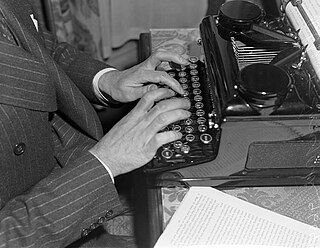
Touch typing is a style of typing. Although the phrase refers to typing without using the sense of sight to find the keys—specifically, a touch typist will know their location on the keyboard through muscle memory—the term is often used to refer to a specific form of touch typing that involves placing the eight fingers in a horizontal row along the middle of the keyboard and having them reach for specific other keys. Both two-handed touch typing and one-handed touch typing are possible.

The ring finger, third finger, fourth finger, leech finger, or annulary is the fourth digit of the human hand, located between the middle finger and the little finger.
Several manual alphabets in use around the world employ two hands to represent some or all of the letters of an alphabet, usually as a part of a deaf sign language. Two-handed alphabets are less widespread than one-handed manual alphabets. They may be used to represent the Latin alphabet or the Cyrillic alphabet.
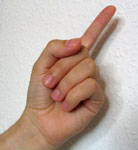
Chinese number gestures are a method to signify the natural numbers one through ten using one hand. This method may have been developed to bridge the many varieties of Chinese—for example, the numbers 4 and 10 are hard to distinguish in some dialects. Some suggest that it was also used by business people during bargaining when they wish for more privacy in a public place. These gestures are fully integrated into Chinese Sign Language.

In electromagnetism, Fleming's right-hand rule shows the direction of induced current when a conductor attached to a circuit moves in a magnetic field. It can be used to determine the direction of current in a generator's windings.

Fleming's left-hand rule for electric motors is one of a pair of visual mnemonics, the other being Fleming's right-hand rule for generators. They were originated by John Ambrose Fleming, in the late 19th century, as a simple way of working out the direction of motion in an electric motor, or the direction of electric current in an electric generator.
"Thirty Days Hath September", or "Thirty Days Has September", is a traditional verse mnemonic used to remember the number of days in the months of the Julian and Gregorian calendars. It arose as an oral tradition and exists in many variants. It is currently earliest attested in English, but was and remains common throughout Europe as well. Full:
Penny football is a coin game played upon a table top. The aim of the game is for a player to score more goals with the pennies than their opponent.
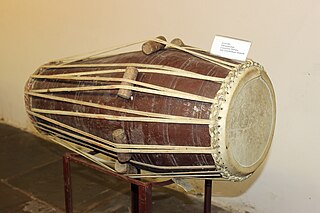
The pakhavaj is a barrel-shaped, two-headed drum, originating from the Indian subcontinent, kendang of Maritime Southeast Asia and other South Asian double-headed drums. Its older forms were made with clay.
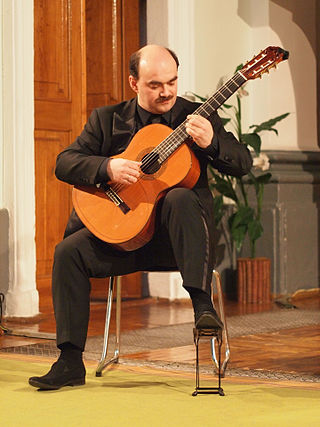
In classical guitar, the right hand is developed in such a way that it can sustain two, three, and four voice harmonies while also paying special attention to tone production. The index (i), middle (m), and ring (a) fingers are generally used to play the melody, while the thumb (p) accompanies in the bass register adding harmony and produces a comparable texture and effect to that of the piano. The classical guitar is a solo polyphonic instrument.

Finger-counting, also known as dactylonomy, is the act of counting using one's fingers. There are multiple different systems used across time and between cultures, though many of these have seen a decline in use because of the spread of Arabic numerals.
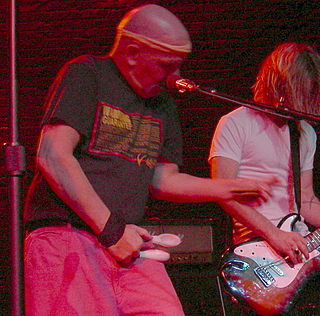
Spoons can be played as a makeshift percussion instrument, or more specifically, an idiophone related to the castanets. They are played by hitting one spoon against the other.

A hand is a prehensile, multi-fingered appendage located at the end of the forearm or forelimb of primates such as humans, chimpanzees, monkeys, and lemurs. A few other vertebrates such as the koala are often described as having "hands" instead of paws on their front limbs. The raccoon is usually described as having "hands" though opposable thumbs are lacking.
The Gregorian calendar is the calendar used in most parts of the world. It went into effect in October 1582 following the papal bull Inter gravissimas issued by Pope Gregory XIII, which introduced it as a modification of, and replacement for, the Julian calendar. The principal change was to space leap years differently so as to make the average calendar year 365.2425 days long, more closely approximating the 365.2422-day "tropical" or "solar" year that is determined by the Earth's revolution around the Sun.

In percussion, grip refers to the manner in which the player holds the sticks or mallets, whether drum sticks or other mallets.
When we close the hand there are four projecting knuckles of the four fingers, with depressions between them. If we give the knuckles and intermediate depressions the names of the successive months, recommencing from the first knuckle, after having once gone over them, we shall find that the months of thirty-one days are those which fall upon the knuckles. Also, in easier words, the gaps between the knuckles indicate months with not 31 days but 30 (excluding February which is 28/29).